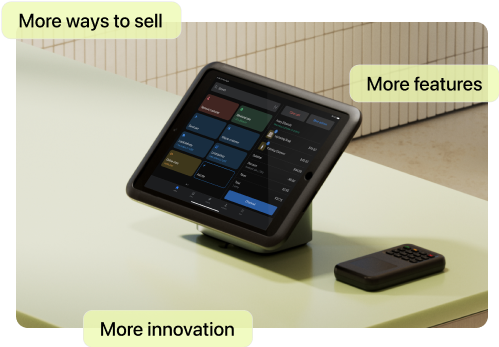Have you ever tapped an Add to Cart button that didn’t do anything? Or tried to fill out a checkout form so small it’s nearly impossible to see? Moments like these can quickly turn eager customers into frustrated ones—and worse, drive them to a competitor.
Mobile user experience design focuses on optimizing your website for smaller screens, like smartphones and tablets. Kellie Kowalski, head of UX design at Fuel Made, says mobile design is often overlooked by businesses. Yet, with mobile now accounting for 60% of total US ecommerce sales (and growing), delivering a seamless mobile shopping experience is no longer optional—it’s a necessity.
What is mobile UX design?
Mobile UX design is the art and science of improving an app or web page's functionality for optimal ease of use on smartphones. Before getting further into mobile UX, it’s important to distinguish user interface (UI) and user experience (UX), since the two are often confused and used interchangeably:
-
UI. Focuses on visual design—how design elements like buttons, icons, layouts, and other graphical elements look and work.
-
UX. Focuses on functionality. It’s about the overall experience—how users feel while interacting with your site. Is it intuitive, efficient, and enjoyable?
Mobile UX design specifically addresses how users interact with your site or app on smaller devices because mobile website users have different needs than those on desktops. For example, they navigate using taps and scrolls rather than clicks, and they browse vertically on a narrow screen. Good mobile designers consider these differences to improve the mobile customer experience.
10 mobile UX best practices
- Use responsive design
- Design vertically
- Consider readability
- Optimize navigation
- Design for tapping
- Improve load time
- Maintain consistent branding
- Use familiar patterns
- Optimize your checkout
- Gather user feedback
1. Use responsive design
Responsive design automatically adapts your site’s layout and content to fit different screen sizes. Adaptive layouts resize images and text while positioning navigation and shopping cart icons within your thumb’s reach. Most content management systems (CMS), like Shopify, provide responsive themes that you can easily edit and preview across all devices.
Responsive design is the best approach when designing for mobile; you only need to create one version of your site that works consistently across multiple devices. This ensures easy navigation and engagement, no matter the screen or platform.
2. Design vertically
“Smaller screens on mobile mean that you need to account for more vertical scrolling when designing content,” Kellie explains. A common mistake is to design for desktop first, then adapt it to a mobile version. Instead, start by designing for mobile devices, then iterate a desktop version.
You only have a limited amount of real estate to work with, so consider every element, including images, text, buttons, and navigation. Stick to single-column layouts so content flows down naturally, and use sticky navigation bars and call-to-action buttons, allowing users to still see these features as they scroll.
For example, Allbirds prioritizes essential content, like CTAs and headlines, above the fold for immediate visibility in its mobile design.

For a stronger vertical design, Kellie advises progressively disclosing information to avoid overwhelming mobile users with too much at once. Instead of showing all the details upfront, you might highlight the most important information, like product name, price, and key features. Mobile users can then access more details by scrolling down or tapping a collapsible menu.
3. Consider readability
Kellie advises adjusting font size and style to different screen sizes. “A common issue I see is mobile designs using heading sizes that are far too large for the screen size,” she says. “Large display type looks great on desktop, but on mobile, it can create a legibility barrier and clutter up the screen.”
She also recommends making content easy to read on smaller screens—like Earth Rated’s benefits section below. “A banner with three lines of text on desktop may take up 10 lines of text on mobile and quickly create issues with cognitive load,” Kellie says. Adjust line and letter spacing and use white space to reduce crowded mobile content.
To test readability, check your mobile designs on desktop by right-clicking, selecting Inspect, and toggling the device toolbar to mobile phones. If using Figma, you can also use the Mirror function in the app.

4. Optimize navigation
Your navigation bar is the fastest way for customers to find what they need. If it’s not intuitive or mobile-friendly, you risk losing sales.
Desktop navigation bars can stretch to include multiple categories and subcategories, but mobile devices don’t offer that luxury. Simplify the navigation to cover just the necessities (like high-intent landing pages and product/services pages) to save space and condense the menu.
Verve Coffee Roasters, for instance, uses vertically collapsible menus on mobile to display subcategories in a clean, simple format.

5. Design for tapping
Make interactive elements and CTAs big enough for thumbs or fingers to use—a minimum of 48 pixels by 48 pixels. Consider also how mobile users hold their devices. Place clickable elements within easy range of a thumb around the middle or bottom of the screen. Conduct user testing and test different placements and sizes to identify the most effective layout.
6. Improve load time
“Site speed is generally considered more important on mobile than desktop due to mobile devices now being more common than desktop and Google prioritizing the mobile version of the site when determining rank,” Kellie explains. Google recommends that above-the-fold content loads within one second so users can start interacting with your site immediately.
Here are some strategies to improve your mobile site speed:
-
Compress image files using a tool like TinyPNG
-
Use lazy loading to only load content in view
-
Minimize plug-ins and third-party scripts
-
Remove unnecessary JavaScript and CSS
7. Maintain consistent branding
“If it’s important enough for large screens, it’s important for small ones too,” Kellie says. This applies to branding as well, including colors, fonts, and logos. Consistent branding helps create a consistent user experience across devices. While the layout and design may change to fit the smaller screen, the core elements should stay consistent.
8. Use familiar patterns
Mobile apps pioneered elements like hamburger menus and carousels, so there’s no need to reinvent the wheel. “Leverage those existing components for a clear, familiar experience so users can shop seamlessly,” Kellie says.
For example, a grid of dots in the top right corner may seem sleek and modern, but mobile users may not recognize this icon or its placement, leading to confusion. Stick with recognizable navigation patterns, like the hamburger menu (three horizontal lines), in familiar spots like the top left or right of the screen.
9. Optimize your checkout
Great mobile UX design makes things as easy as possible for the user, especially at checkout. The goal is to minimize friction and expedite the order completion process. Here are key tips:
-
Use address autocomplete to automatically fill addresses from Google Maps. (In Shopify, you can do this through Settings > Checkout and Accounts and check the Use Address Autocompletion box.)
-
Integrate mobile-friendly payments like Apple and Google Pay.
-
Specify the input type in form fields so that mobile keyboards adjust automatically—for example, displaying the numeric keyboard for a phone number field.
-
Place important buttons like Place Order or Next within easy thumb reach.
For example, jewelry designer Camille Brinch’s shipping page uses Google’s address autocomplete to suggest addresses, saving users the time of entering their entire address manually.

10. Gather user feedback
Once you launch your site, conduct usability testing and user research, and gather both quantitative (numerical) and qualitative (non-numerical) user feedback. You can use analytics tools like Google Analytics 4 (GA4) to track user behavior.
Consider using heat mapping tools like Hotjar to visualize how mobile users interact with your site. Find people who have never interacted with your site, and have them walk you through their thought process during a purchase.
Then, perform A/B tests on button placements, copy, and interactive elements to see what mobile users prefer.
Mobile UX design FAQ
What is the difference between UX and UI designers?
User experience (UX) and user interface (UI) are closely related but distinct. UX designers focus on site functionality, including how efficiently users can complete goals. UI designers focus on a site or app’s user interface and visual design, ensuring it’s aligned with brand identity.
What do UX designers need to consider?
UX designers consider usability, accessibility, and user behavior to create a user-friendly experience. On mobile, this includes touch-friendly design, fast load times, intuitive navigation, and layouts optimized for small screens. Users expect apps and mobile sites to be just as fast and accessible as desktop sites.








